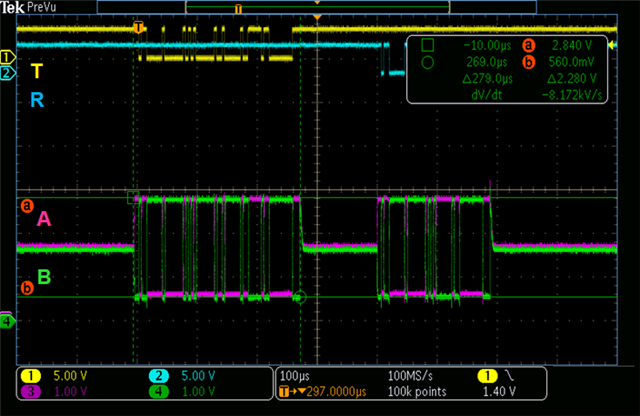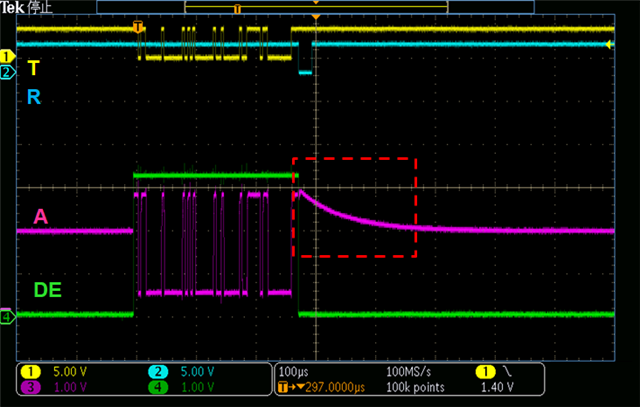Tool/software:
Hi All,
I have a question about THVD1439.
Is it necessary to pull up the A(6pin) and pull down the B(7pin)?
Below are the waveforms when each terminal is pulled up and pulled down.
The waveform will be normal.

Below are the waveforms when the pull-up and pull-down resistors are removed from each terminal.

The waveform becomes dull when the A terminal pull-up is removed. Do you know why?
Best Regards,
Ishiwata

